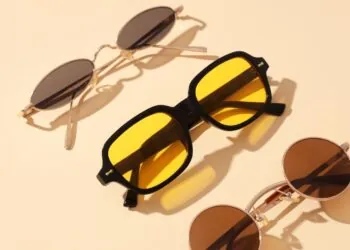
Confidence. People often frame it as something born inside, untouched by appearance or physical health. But anyone who has faced days of fatigue, dull skin, or aches in the body knows the truth: how we feel physically and how we carry ourselves are deeply tied together. The body speaks to the mind, and the mind answers back. When both move in sync, confidence becomes steady and real.
It’s not about vanity. It’s about alignment. A balance between looking rested, feeling healthy, and walking into a space without the weight of small insecurities dragging behind.
The Subtle Link Between Health and Self-Perception
Health quietly shapes how we see ourselves. Clearer skin after weeks of hydration. The slight lift in energy after adding movement to daily life. Even the absence of constant tension in the shoulders. These shifts don’t just change the body—they alter perception. The mirror reflects vitality, and the mind begins to believe it.
What people often forget is that confidence isn’t only mental training. It’s reinforced by physical signals: the glow of skin, posture that holds, energy that lasts through the day. When those signals falter, insecurities echo louder. Fine lines that feel too obvious. The heaviness under the eyes suggests exhaustion even after rest. It’s not simply about looks. It’s about what those signs say back to the mind: “You’re tired. You’re aging. You’re not keeping up.”
That’s where modern care steps in. Treatments today are not always about chasing dramatic change or correcting something “wrong.” They often lean toward subtle support: quiet adjustments that don’t shout but instead whisper balance back into the face. Think of it less as transformation and more as restoration. A way of allowing the outside to catch up with how someone feels inside—vibrant, alive, present.
People no longer want to look “different.” They want to look like themselves on a good day, every day. That’s why the focus has shifted toward treatments that prioritize natural results. Volume where it has gently faded. Softening where lines cut deeper than someone feels they should. A refreshed look that doesn’t erase character but adds harmony.
For many, this means considering solutions like Juvederm. It sits in that space between science and subtlety: designed to restore balance without stripping away authenticity. The aim isn’t to create a new face, but to give back what time has slowly taken, so the reflection matches the energy within.
Skin as a Canvas of Health
The skin speaks louder than we admit. It shows stress in breakouts. It reflects hydration, sleep, and diet. It betrays fatigue faster than words can explain. That’s why skin is often the first focus when someone talks about self-care. Because it’s visible, immediate, and tied to how we present ourselves.
Cleansers, moisturizers, serums—all have their place. They’re part of rituals that give people a sense of control. But genetics and time remain steady forces. Volume loss, fine lines, and texture changes aren’t failures of routine. They’re natural. And while some accept them fully, others choose treatments that restore what’s shifted.
There’s no right or wrong here. Only choice. And having the option itself builds confidence.
The Body’s Conversation with the Mind
Health extends far deeper than skin. The body’s rhythm controls the mind more than most admit. A poor night’s sleep clouds focus. Stiffness from sitting too long dampens motivation. Lack of movement or poor diet creates energy dips that no coffee can mask.
And when the body feels off, the mind follows. Doubt creeps in. Social situations feel heavier. The smallest tasks take extra push.
On the other side, consistent care of the body changes everything. A morning walk loosens joints and sparks endorphins. Balanced meals stabilize energy. Stretching before bed brings better sleep. Even posture shifts the way confidence feels: shoulders back, chin lifted, breath steady. These are not grand gestures, but small acts with compounding effects.
The loop is constant: the body feeds the mind, the mind fuels the body. Ignore one, and both stumble.
Confidence: Performed or Lived?
Many try to perform with confidence. Stand tall. Speak louder. Smile wider. And it works, temporarily. But underneath, doubt remains.
Lived confidence feels different. It doesn’t have to be forced. It arrives naturally when someone feels aligned. Their skin feels healthy, their body supports them, their mind is steady. In this state, confidence doesn’t shout. It simply is. Quiet, grounded, yet powerful.
That’s the kind of confidence worth building. And it doesn’t arrive in one single way. For some, it’s through routine exercise. For others, through supportive treatments. For many, it’s both.
The Role of Stress
Stress is a silent thief of confidence. It shows in skin: breakouts, dryness, dullness. It weighs on the body: tension in shoulders, shallow breath, restless nights. And it clouds the mind: constant noise, self-doubt, fatigue.
Managing stress isn’t about removing it completely. That’s not realistic. It’s about building habits that create buffers. Deep breathing before a meeting. Walks outside when the day feels heavy. Learning to say no without guilt. These small steps free up mental space and reduce the visible toll stress takes.
When stress is managed, the skin softens, the body relaxes, and the mind steadies. Confidence becomes easier to carry.
Aging with Choice
Aging is inevitable. Everyone knows this. But how each person approaches it varies. Some let it unfold naturally, carrying each line as a story. Others seek support, not to erase age, but to reflect the vitality they still feel inside.
The important part: choice.
Aging well doesn’t mean looking twenty forever. It means feeling aligned with how you want to present yourself. For some, this includes skincare routines and healthy living. For others, it means using modern treatments that restore balance. The key is that it’s personal, not pressured.
Confidence thrives when people make choices for themselves, not because of comparison.

Community and Confidence
There’s another layer often overlooked: the role of community. Confidence isn’t only shaped in the mirror. It’s also influenced by the environment—friends, family, colleagues. Supportive surroundings allow people to feel at ease. Encouragement to care for health, to prioritize self, to celebrate both natural beauty and chosen treatments—these social factors matter.
When people feel judged, confidence shrinks. When they feel supported, it grows. Community provides the mirror that reflects back reassurance.
Medical Health as Quiet Support
Medical health doesn’t take over confidence. It supports it. Treatments, checkups, therapies—they all build a base that frees people to focus on living rather than worrying. The goal isn’t to change identity. It’s to remove small weights: the wrinkle that distracts in every photo, the fatigue that drains energy, the skin issue that lowers social ease.
Confidence grows when those distractions fade. It becomes quiet support: not loud, not performative, but steady.
Final Reflection
Confidence doesn’t start only in the mind. It’s a conversation between skin, body, and mind. Clearer skin signals health. A stronger body provides energy. A calmer mind allows presence. And when all three align, confidence isn’t something to perform—it’s something to live.
Medical health plays a role in this balance. It’s not about perfection. It’s about choice, care, and alignment. Whether through daily habits, supportive treatments, or both, confidence becomes less about trying and more about being.












Discussion about this post